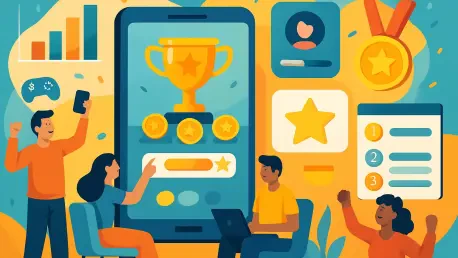Imagine a conference where attendees are not just passively listening to speakers but are actively competing in challenges, earning rewards, and connecting with peers through playful interactions, transforming the entire delegate experience. This dynamic shift is becoming a reality at many events, where the integration of game-like elements is revolutionizing how participants engage. Gamification, the process of applying game mechanics to non-game contexts, offers a powerful tool for event organizers to elevate engagement and create lasting impressions. By tapping into the natural human desire for competition, achievement, and social connection, this approach turns mundane gatherings into vibrant, interactive spaces. The potential lies in crafting activities that resonate with attendees, ensuring they feel involved and valued throughout the event. As the demand for memorable experiences grows, understanding how gamification can energize participants and foster community is essential for any planner aiming to stand out in a crowded field.
Transforming Passive Attendees into Active Participants
The challenge of keeping delegates engaged during long events is a persistent one, often resulting in distracted or disconnected attendees. Gamification addresses this by introducing interactive elements like scavenger hunts that encourage exploration of the venue and interaction with exhibitors through trivia or photo challenges. Leaderboards and prizes add a layer of excitement, motivating participants to dive deeper into the event’s offerings. This kind of activity not only breaks the monotony of traditional formats but also creates a sense of purpose, as attendees actively seek out experiences rather than passively absorb content. The result is a more energized atmosphere where individuals feel a personal stake in the event’s success, making every moment count with a blend of fun and discovery that keeps them coming back for more.
Beyond physical challenges, gamification can weave digital and social elements into the fabric of an event to sustain attention during presentations. Live polls and quiz battles, for instance, turn lectures into interactive sessions where audience input shapes the discussion. Team-based competitions further heighten the stakes, fostering camaraderie among strangers while maintaining focus on the content being delivered. These tools are particularly effective in preventing the mid-event slump, ensuring that energy levels remain high throughout the day. By blending technology with human interaction, such strategies create a seamless experience that feels both entertaining and meaningful, ultimately deepening the connection between delegates and the event’s objectives.
Building Connections Through Playful Mechanics
Networking often feels like a daunting task at events, with many attendees hesitant to approach strangers for conversation. Gamification can ease this tension by turning socialization into a game, such as through networking bingo, where task-based cards prompt participants to meet specific types of people or discuss certain topics. This structured yet playful approach removes the awkwardness of initiating contact, making it easier for delegates to form genuine connections. Additionally, social media contests that reward attendees for sharing event content online amplify reach while encouraging interaction in a digital space. These methods transform networking from a chore into an engaging activity, fostering a sense of community that extends beyond the event itself.
Another innovative way to build connections is through interactive storytelling, where delegates influence narratives by voting or solving problems together. This creates an emotional investment in the event, as participants see their choices shape the outcome, sparking discussions and collaboration. Wellness challenges also play a role by promoting health-focused activities like walking or mindfulness, tracked via leaderboards to encourage friendly competition. Such initiatives not only enhance individual well-being but also unite attendees around shared goals, creating bonds over common achievements. By embedding these game mechanics, events become platforms for meaningful interactions that leave delegates feeling part of a larger, supportive network.
Crafting Memorable Experiences with Simple Strategies
The beauty of gamification lies in its accessibility, as even simple strategies can yield significant boosts in engagement without requiring substantial budgets or complex setups. Badge collection challenges, for example, reward attendees for actions like attending sessions or networking, using visible digital badges to instill a sense of accomplishment. This straightforward mechanic taps into the universal desire for recognition, motivating participants to engage more fully with the event’s agenda. When designed to align with the audience’s interests, these small incentives can transform the delegate experience, making every interaction feel rewarding and purposeful while maintaining an atmosphere of lighthearted fun.
Looking back, the impact of gamification at events was evident in how it shifted dynamics from passive observation to active participation. Reflecting on past implementations, the success of these strategies often hinged on their relevance and ease of access, ensuring that every attendee could join in without barriers. Moving forward, organizers are encouraged to experiment with tailored game elements that resonate with their specific audience, prioritizing creativity over complexity. Exploring hybrid formats that blend in-person and digital challenges could further enhance accessibility, while consistently gathering delegate feedback would refine future efforts. These steps promise to sustain the momentum of gamified events, ensuring they remain vibrant spaces for connection and growth.









